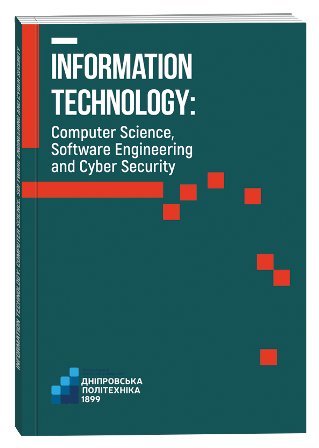USING MACHINE LEARNING FOR CLUSTERINGUSING THE HAZARD INDEX OF TAILINGSAND THEIR ENVIRONMENTAL IMPACT
DOI:
https://doi.org/10.32782/IT/2024-4-11Keywords:
machine learning, clustering, k-means method, tailings, DBSCAN method, hazard index, agglomerative clustering method, environment.Abstract
The article analyzes the hazardous impact of industrial tailings on the environment using machine learning methods for their clustering. With different sizes of tails, their toxicity and parameters, their location in clusters was determined, which made it possible to classify the condition according to the degree of their danger. A comparative analysis of machine learning approaches and other methods of finding analogues for determining the potential danger of tailings storage facilities was carried out. Using the DBSCAN method, the tails were identified, which according to their parameters fell into the root, marginal, and noise clusters. All tails that fell into the root and border clusters were classified by the following clustering method – k-means, and they were allocated to one of four clusters. K-means clustering was constructed on tail data samples by comparing the distance metric between adjacency matrices compiled into a one-dimensional vector. The results of the evaluation of the algorithm are given, which confirm that the modeling and search for clustering centers using k-means is a more difficult solution to the problem compared to the method of agglomerative clustering, which was reduced to the comparison of k-means. Thus, the accuracy of the used clustering approach turned out to be higher than that of existing classical clustering algorithms. The purpose of the work is the clustering of tailings, formed by the activity of industrial production, according to the level of their dangerous impact on the environment using machine learning methods. The methodology. To achieve the goal, the methods of machine learning and data analysis implemented within the Sklearn framework of the Python programming language were used, and the pandas data package was used, which allows processing large data sets using a flexible system of formatting and queries to them. Data grouping was carried out using a group of unsupervised learning methods: DBSCAN clustering algorithms, cluster analysis using the hierarchical tree clustering method and k-means method, principal component method. The scientific novelty. The scientific novelty consists in the choice of methods of clustering of tailings storage facilities using methods of cluster analysis. Conclusions. With the help of machine learning methods, clustering of tailings storage facilities was performed, depending on the degree of their danger to the environment.
References
Nikolaieva I. O., Rudakov D. V. Development of a checklist for improvement of tailings safety. Naukovyi Visnyk Natsionalnoho Hirnychoho Universytetu. 2015. 2, 97–103
Proceedings of 7th International Conference Innovation Management, Entrepreneurship and Sustainability (IMES), 2019. Pp. 519–533
Kravchenko S., Hryshkun Ye. and Vlasenko O., Metody klasyfikatsii mashynnoho navchannia z vykorystanniam biblioteky scikit-learn, URL: http://tech.vernadskyjournals.in.ua/journals/2020/3_2020/part_1/21.pdf
Winkelmann-Oei G., Rudakov D., Shmatkov G., Nikolaieva I. A method for evaluation of tailings hazard. New Developments in Mining Engineering: Theoretical and Practical Solutions of Mineral Resources Mining / editors Bondarenko V., Kovalevska I., Pivnyak G. London: Taylor & Francis Group, 2015. pp. 33–38.
URL: https://www.sendaiplatform.org
Rico, M., Benito, G., Díez-Herrero, A. Floods from tailings dam failures. J. Hazard. Mater. 2008a. 154, 79–87.
Rico, M., Benito, G., Salgueiro, A.R., Díez -Herrero, A., Pereira, H.G. Reported tailings dam failures: a review of the European incidents in the worldwide context. J. Hazard. Mater. 2008b.152, 846–852.
Coduto D. P. Geotechnical Engineering: Principles and Practices. 1998.
Fredlund D. G., Rahardjo H., Fredlund M. D. Unsaturated Soil Mechanics in Engineering Practice. 2012.
Wozniak M. Editorial: Applying Machine Learning for Combating Fake News and Internet/Media Content Manipulation. 2021 URL: https://www.researchgate.net/publication/354462936_Editorial_Applying_Machine_Learning_for_Combating_Fake_News_and_InternetMedia_Content_Manipulation.
Astakhova N. N., Demidova L. A., Nikulchev E. V. Forecasting Method for Grouped Time Series with the Use of K-Means Algorithm. Applied Mathematical Sciences. 2015. Vol. 9. No. 97. P. 4813–4830.







